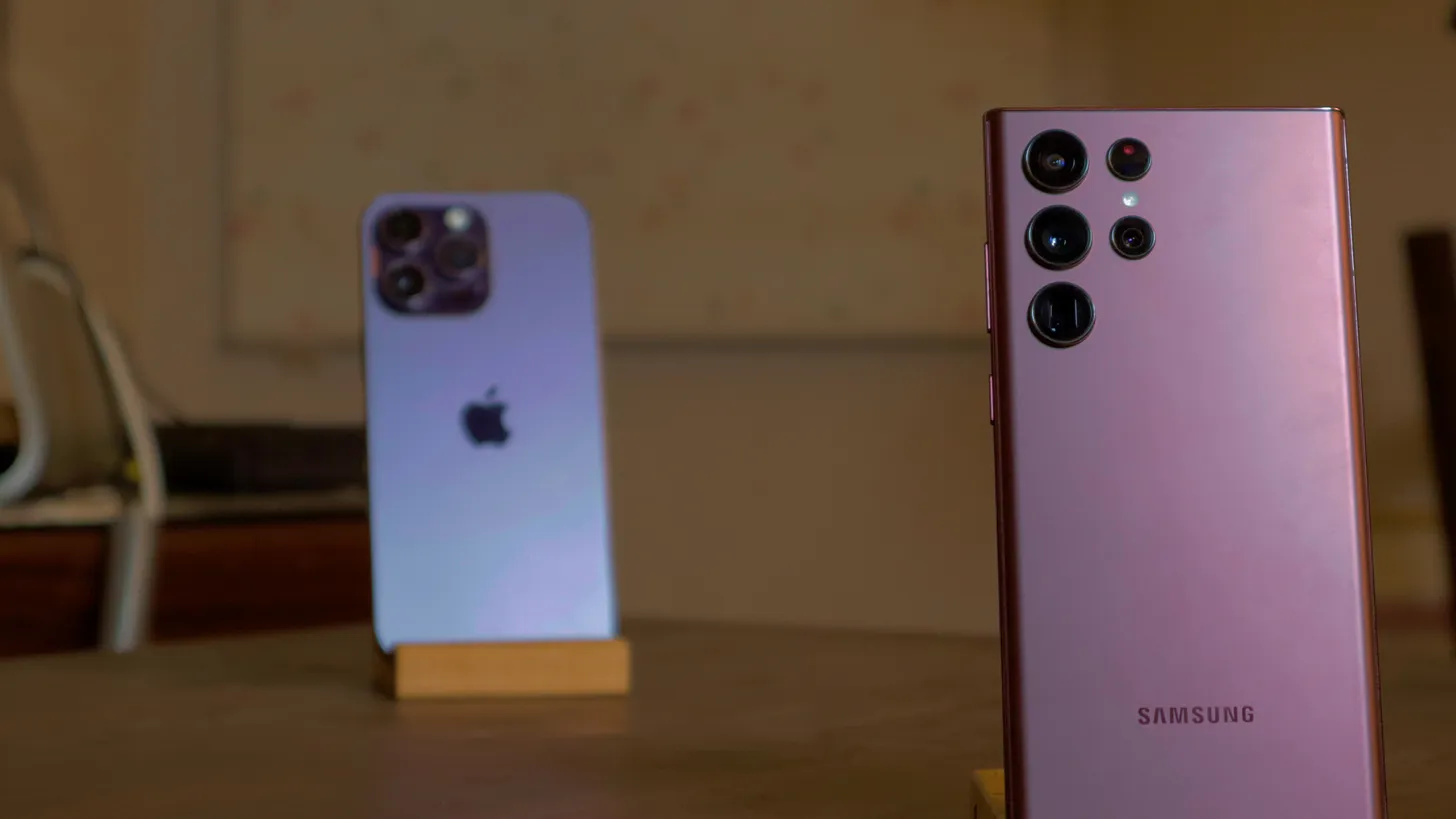Originally published in 2022. Updated October 2025 to reflect later developments. This piece was also written at a time when the Google Pixel line lacked in comparison to the Galaxy. The Pixel has come a long way, and in my view, represents the peak of Android.
There’s no debate more exhausting — or more meaningless — than iOS versus Android. It’s tribal, circular, and perpetually missing the point. I’ve never believed in taking sides, because to do so is to misunderstand both.
To even make the comparison, you first have to define what they are. Android is an operating system that dozens of manufacturers use, each of whom overlays their own design language and priorities on top. iOS is an ecosystem built and controlled by one company from top to bottom. It’s not apples-to-apples making the two comparisons — it’s more like comparing an orchestra to a solo performer.
For me, Samsung’s Galaxy series has been the pinnacle of what Android has to offer. Google’s Pixel, which I reviewed in my 6 Pro review, is charming and ambitious, but still lags behind in refinement.
As much as I love my iPhone, Apple Watch, and AirPods, they’ve begun to feel a little claustrophobic. Apple’s philosophy has always been clear: it would far prefer to release a complete version of a feature than ship out with it half-done. “Be the best, not the first.” It’s a mantra that’s served Apple well, but one that can frustrate its most loyal fans.
This limitation is what makes Apple’s products overall feel finished in a way that few others do. It also implies life in Apple’s world often involves waiting. Innovations like always-on screen and 120Hz refresh took years to arrive after Android had normalized them. When they finally arrive in the Apple world, they function flawlessly — but by the time that happens, the newness has faded.
I’m at a crossroads between those two ideals. Part of me longs for Apple’s patience and tact. The other side of me needs the room to experiment first, permission not required. For the very first time, I’ve chosen to see what the other side really feels like, firsthand.
For now, my daily setup will be a Galaxy S22 Ultra paired with the Galaxy Watch and Galaxy Buds Pro 2. The transition has its sacrifices — no iMessage, no Apple Pay, no Sign in with Apple — but it’s been refreshing to start over. I’ve had to undo past habits, re-sign into each app by hand, and even relearn some niceties I’d previously grown accustomed to. There’s something strangely tactile about that.
And yet, even as I bid iPhone adieu for a few seconds, I cannot help but admire what Apple gets right. Take the always-on screen. If I leave the room with my Apple Watch, the iPhone screen switches off automatically. When I return, it’s back on. It’s a thoughtful, almost imperceptible design — the sort that speaks not of engineering mastery but thoughtful design. My Galaxy is yet to keep up in that regard.
That is the takeaway of this drill: Apple’s slowness is not laziness, but discipline. Android’s speed is not recklessness, but openness. Somewhere between the two will be the future of the smartphone.
Until then, I’ll keep digging around in the Android cosmos and writing about what I find. Maybe I’ll miss iMessage more than I know. Maybe I won’t. Either way, I’ll write about it, because crossing over shouldn’t be treason. It should be curiosity.

Interesting. I would try switching but I simply cannot leave because of the integration with my M1 air.
Moving from one ecosystem to another is not that easy or straightforward. Also looking forward to see what you feel after a month after switching